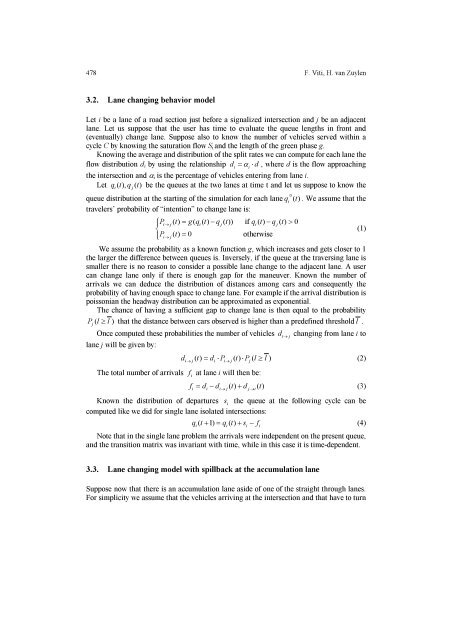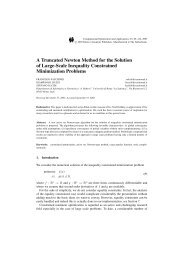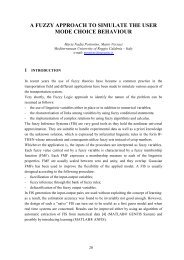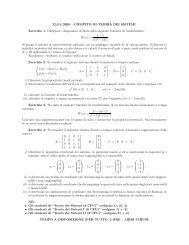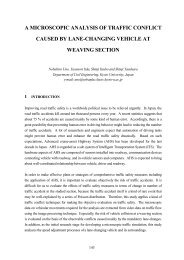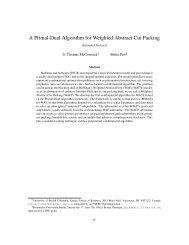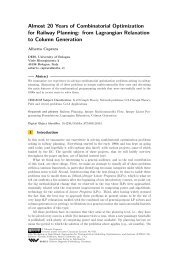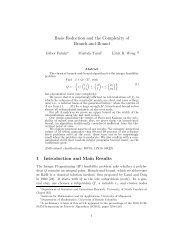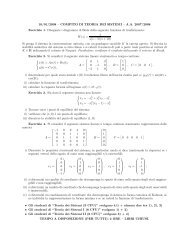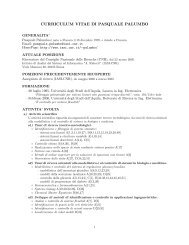MARKOV MESOSCOPIC SIMULATION MODEL OF OVERFLOW ...
MARKOV MESOSCOPIC SIMULATION MODEL OF OVERFLOW ...
MARKOV MESOSCOPIC SIMULATION MODEL OF OVERFLOW ...
You also want an ePaper? Increase the reach of your titles
YUMPU automatically turns print PDFs into web optimized ePapers that Google loves.
478 F. Viti, H. van Zuylen<br />
3.2. Lane changing behavior model<br />
Let i be a lane of a road section just before a signalized intersection and j be an adjacent<br />
lane. Let us suppose that the user has time to evaluate the queue lengths in front and<br />
(eventually) change lane. Suppose also to know the number of vehicles served within a<br />
cycle C by knowing the saturation flow S i and the length of the green phase g.<br />
Knowing the average and distribution of the split rates we can compute for each lane the<br />
flow distribution d i by using the relationship di = αi<br />
⋅ d , where d is the flow approaching<br />
the intersection and α i is the percentage of vehicles entering from lane i.<br />
Let q ( t), q ( t ) be the queues at the two lanes at time t and let us suppose to know the<br />
i<br />
j<br />
queue distribution at the starting of the simulation for each lane q<br />
i0 ( t ) . We assume that the<br />
travelers’ probability of “intention” to change lane is:<br />
⎧⎪ Pi →j ( t) = g( qi ( t) − qj ( t)) if qi ( t) − qj<br />
( t) > 0<br />
⎨<br />
(1)<br />
⎪⎩ Pi →j<br />
( t) = 0 otherwise<br />
We assume the probability as a known function g, which increases and gets closer to 1<br />
the larger the difference between queues is. Inversely, if the queue at the traversing lane is<br />
smaller there is no reason to consider a possible lane change to the adjacent lane. A user<br />
can change lane only if there is enough gap for the maneuver. Known the number of<br />
arrivals we can deduce the distribution of distances among cars and consequently the<br />
probability of having enough space to change lane. For example if the arrival distribution is<br />
poissonian the headway distribution can be approximated as exponential.<br />
The chance of having a sufficient gap to change lane is then equal to the probability<br />
P ( l ≥ l ) that the distance between cars observed is higher than a predefined thresholdl .<br />
j<br />
Once computed these probabilities the number of vehicles di → j<br />
changing from lane i to<br />
lane j will be given by:<br />
d ( t) = d ⋅ P ( t) ⋅ P ( l ≥ l )<br />
(2)<br />
i→j i i→j j<br />
The total number of arrivals f<br />
i<br />
at lane i will then be:<br />
f = d − d ( t) + d ( t)<br />
(3)<br />
i i i→j j→i<br />
Known the distribution of departures s<br />
i<br />
the queue at the following cycle can be<br />
computed like we did for single lane isolated intersections:<br />
q ( t + 1) = q ( t)<br />
+ s − f<br />
(4)<br />
i i i i<br />
Note that in the single lane problem the arrivals were independent on the present queue,<br />
and the transition matrix was invariant with time, while in this case it is time-dependent.<br />
3.3. Lane changing model with spillback at the accumulation lane<br />
Suppose now that there is an accumulation lane aside of one of the straight through lanes.<br />
For simplicity we assume that the vehicles arriving at the intersection and that have to turn


